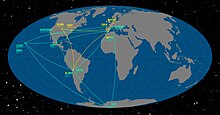What Happened to Them...
I was in the second grade in 1942, like these children at Weill Elementary in San Francisco. Like them, I enthusiastically repeated the Pledge of Allegiance to the flag each school day. But most of the kids in this photo by Dorothea Lange, taken in January 1942, were sent to prison a month later along with their parents. They were Californians, like me, but guilty of being descended from Japanese heritage. I wept when I saw the photo this week, but I didn't cry when several of my 2nd grade classmates disappeared in February 1942. I asked my parents where they had gone. Some were not only my friends, but the children of people my parents knew well. We often worked during the season helping pick strawberries and other crops grown by those families on the then-fertile agricultural land in the Palos Verdes hills above my hometown of San Pedro, south of Los Angeles.
So I was mystified when my mother refused to say where my friends had gone. Or even to speak of them or their families again during the war. I didn't learn until late in 1945 that the Japanese-Americans in California had been held in concentration camps near Bakersfield and many other places to the east. Decades later I would have a colleague--a philosophy professor like me--who was born in Oklahoma, where his California-born parents--third generation Americans--had been incarcerated.
I never understood, let alone forgave, my parents' abandoning any fellow-feeling for their friends: they never said they were sorry or regretted the criminal U.S. policy of the time.
Faced once again with this experience, I weep...






